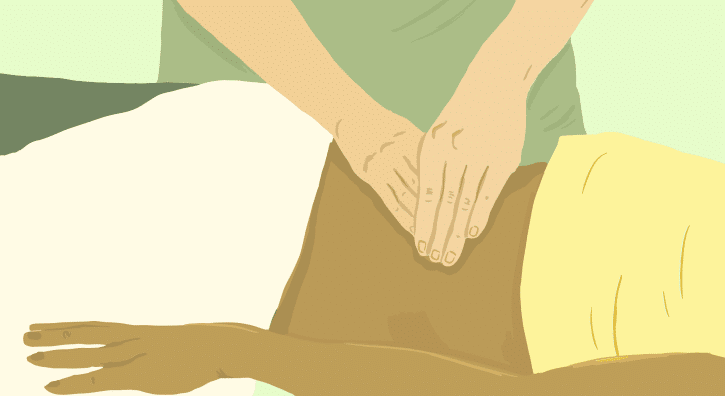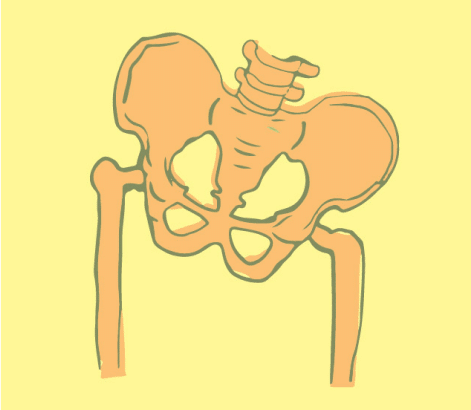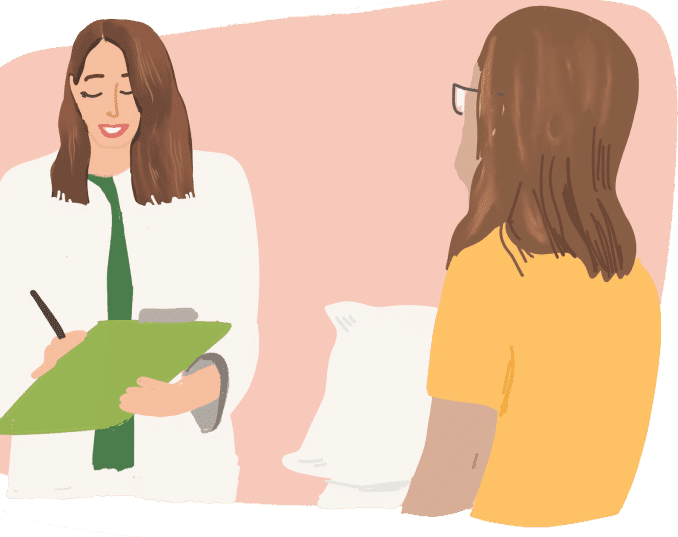

Symptoms
- Pelvic pain in women may present as aching, itching, or burning in areas such as the vulva, vagina, anal opening, or perineum
- Sensitive reactions to clothing, discomfort during sex, and pain when sitting for long stretches are common complaints
- Exercise may serve as a trigger or aggravate existing pelvic symptoms
- Bladder issues can include urgency, frequency, discomfort while urinating, or mild to moderate leakage
- Digestive symptoms such as bloating, constipation, or stomach distress are often present alongside pelvic pain
- Symptoms may have clear triggers—such as intercourse—or may appear unexpectedly
- They may fluctuate in intensity, showing up periodically or persisting over time

Symptoms
- Pelvic pain in women may present as aching, itching, or burning in areas such as the vulva, vagina, anal opening, or perineum
- Sensitive reactions to clothing, discomfort during sex, and pain when sitting for long stretches are common complaints
- Exercise may serve as a trigger or aggravate existing pelvic symptoms
- Bladder issues can include urgency, frequency, discomfort while urinating, or mild to moderate leakage
- Digestive symptoms such as bloating, constipation, or stomach distress are often present alongside pelvic pain
- Symptoms may have clear triggers—such as intercourse—or may appear unexpectedly
- They may fluctuate in intensity, showing up periodically or persisting over time

Associated Diagnoses
Diagnoses such as Endometriosis, Vulvodynia, Interstitial Cystitis/Painful Bladder Syndrome, Pudendal Neuralgia, Lichen Sclerosus, Lichen Planus, and Irritable Bowel Syndrome are associated with pelvic pain and pelvic floor dysfunction.


Causes of Pelvic Pain
- Repetitive vaginal and/or bladder infections and/or gynecologic, urologic, dermatologic or gastrointestinal conditions
- The majority of women with pelvic pain have pelvic floor dysfunction
- Prescription medications such as oral contraceptives, acne medications, and hormonal suppressive therapies for diseases such as Endometriosis and Polycystic Ovarian Syndrome (PCOS)
- Surgical trauma (childbirth, pelvic organ prolapse repair, hysterectomy)
- Orthopedic injuries or traumas
- Biomechanical or structural dysfunction (hip dysfunction, sacro-iliac joint dysfunction, piriformis syndrome, scoliosis, leg length discrepancy)
- Vaginal childbirth
- Menopause
- Genital cutting or genital mutilation
Symptoms
- Repetitive vaginal and/or bladder infections and/or gynecologic, urologic, dermatologic or gastrointestinal conditions
- The majority of women with pelvic pain have pelvic floor dysfunction
- Prescription medications such as oral contraceptives, acne medications, and hormonal suppressive therapies for diseases such as Endometriosis and Polycystic Ovarian Syndrome (PCOS)
- Surgical trauma (childbirth, pelvic organ prolapse repair, hysterectomy)
- Orthopedic injuries or traumas
- Biomechanical or structural dysfunction (hip dysfunction, sacro-iliac joint dysfunction, piriformis syndrome, scoliosis, leg length discrepancy)
- Vaginal childbirth
- Menopause
- Genital cutting or genital mutilation

Diagnostic Challenges
Across San Diego, countless women experience the uncertainty of living with pelvic pain that goes undiagnosed for years—often five or more. Women with Endometriosis may wait even longer, sometimes up to 11 years, before understanding what’s truly wrong. That’s because pelvic floor dysfunction mimics more commonly known conditions like urinary infections, STIs, or yeast infections. With negative test results and unresolved symptoms, both doctors and patients are left puzzled. Many of the women we see had no prior awareness of the pelvic floor’s role in their pain until their journey brought them to a pelvic health specialist who could connect the dots.
Diagnostic Challenges
Across San Diego, countless women experience the uncertainty of living with pelvic pain that goes undiagnosed for years—often five or more. Women with Endometriosis may wait even longer, sometimes up to 11 years, before understanding what’s truly wrong. That’s because pelvic floor dysfunction mimics more commonly known conditions like urinary infections, STIs, or yeast infections. With negative test results and unresolved symptoms, both doctors and patients are left puzzled. Many of the women we see had no prior awareness of the pelvic floor’s role in their pain until their journey brought them to a pelvic health specialist who could connect the dots.
Treatment:
How We Can Help You

Women across San Diego who are experiencing persistent pelvic pain may find real relief through a thorough evaluation with a pelvic floor physical and occupational therapists. In this in-depth session, your therapist will review your past diagnoses, treatment experiences, and the symptoms you’ve been managing. We recognize that for many women in San Diego, the path to this point has been filled with frustration, misdiagnosis, or temporary solutions. Your evaluation will include a physical examination of the pelvic muscles, surrounding tissues, joints, and nerves, as well as a review of your body’s functional movement patterns. Once your therapist completes the assessment, you’ll receive a detailed explanation of your condition along with a treatment plan designed around your goals. Treatment usually consists of weekly or biweekly sessions over 12 weeks, supported by a customized home exercise routine. We also ensure smooth collaboration with any other providers on your care team. Our practice is here to support your full recovery and help you reclaim your health.

Treatment:
How We Can Help You
Women across San Diego who are experiencing persistent pelvic pain may find real relief through a thorough evaluation with a pelvic floor physical and occupational therapists. In this in-depth session, your therapist will review your past diagnoses, treatment experiences, and the symptoms you’ve been managing. We recognize that for many women in San Diego, the path to this point has been filled with frustration, misdiagnosis, or temporary solutions. Your evaluation will include a physical examination of the pelvic muscles, surrounding tissues, joints, and nerves, as well as a review of your body’s functional movement patterns. Once your therapist completes the assessment, you’ll receive a detailed explanation of your condition along with a treatment plan designed around your goals. Treatment usually consists of weekly or biweekly sessions over 12 weeks, supported by a customized home exercise routine. We also ensure smooth collaboration with any other providers on your care team. Our practice is here to support your full recovery and help you reclaim your health.
How Can We Help You?
We welcome your questions and feedback—just use the form below to get in touch. Make sure to include your email address so we can respond. Your details will be kept confidential and used only for communication purposes.

Join The Newsletter. Win a copy of our book, “Pelvic Pain Explained!”
We love getting to know our website visitors. Please tell us a little bit about yourself and get the latest info via PHRC e-newsletter!
*Subscribers automatically eligible to win our book, “Pelvic Pain Explained.”


